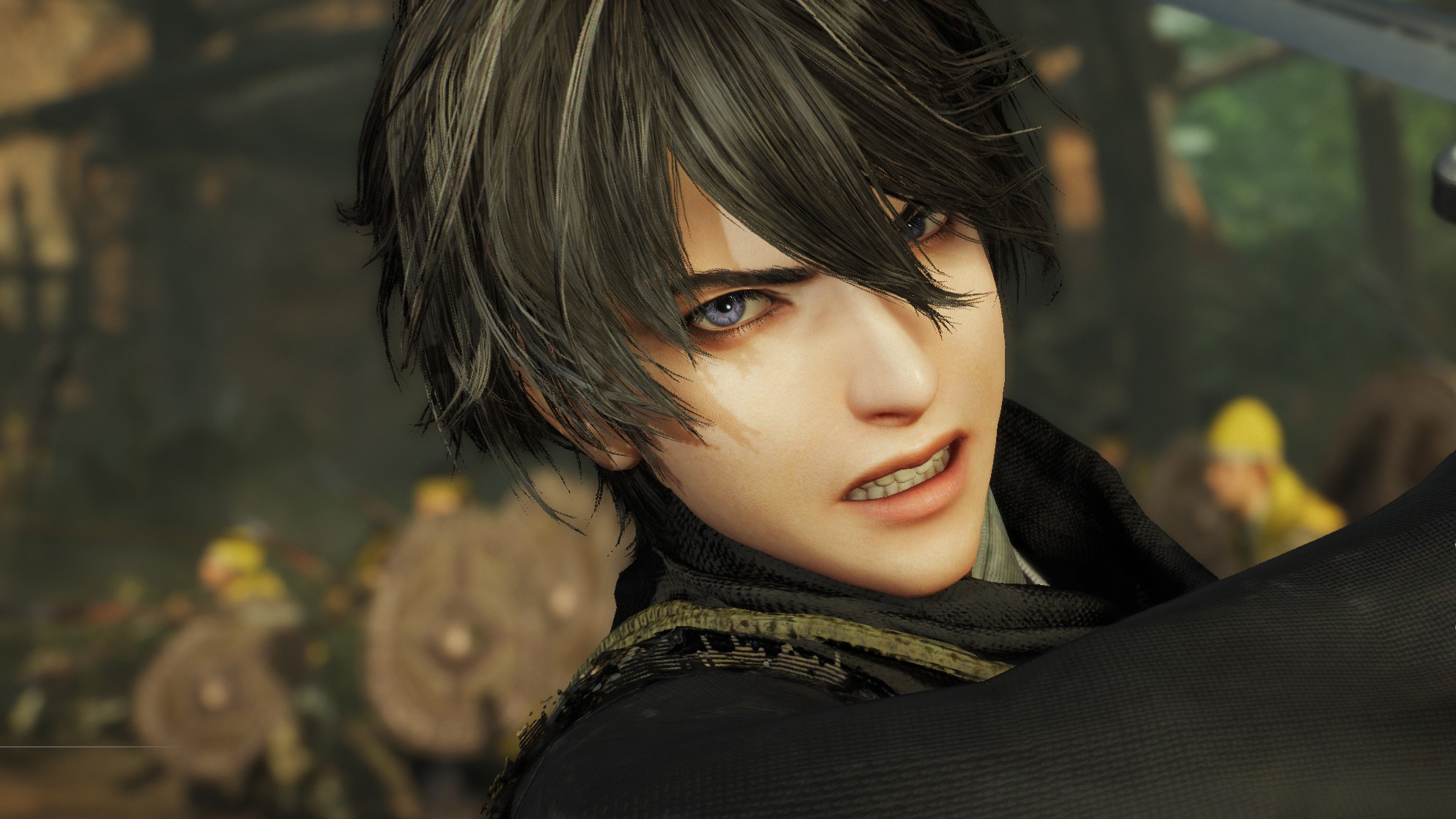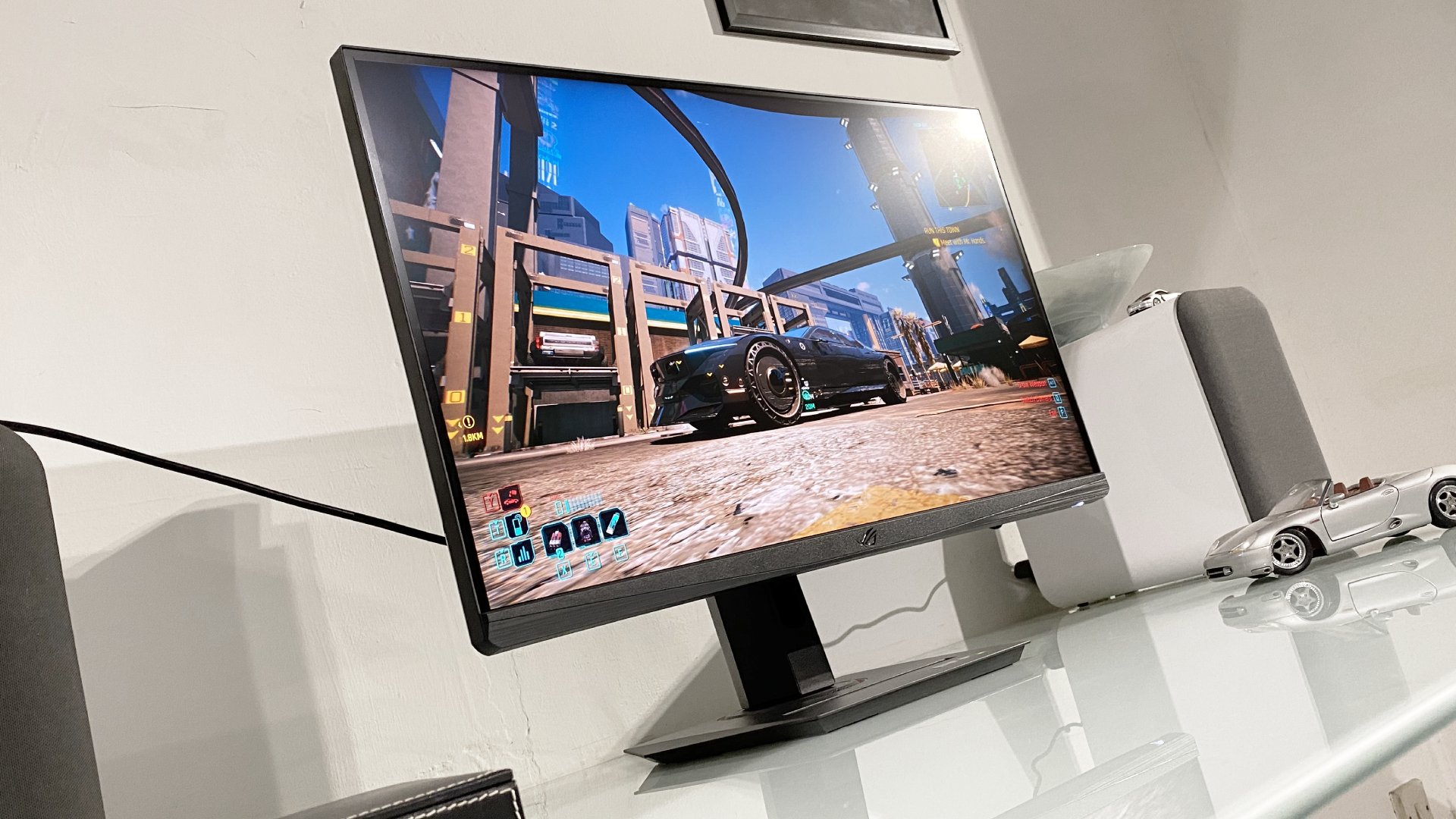Our Verdict
A welcome refresh of a hack-and-slash mainstay that mostly impresses, despite a few glaring pacing problems.
PC Gamer's got your back
No videogame characters blather on about their feelings more than the long-dead warlords of Dynasty Warriors: Origins. Between immense battles where thousands of men die horribly to my character's blades and magic powers, these historical leaders express their gratitude for our friendship and the valuable time we spend together, while also sharing their deepest self-doubts about conquering and ruling parts of China. It's like a bizarre paean to male friendship, only your best pal has been dead for 1,800 years and has a 4,000-word page on Wikipedia.
What is it? 1v1000 battles against a Romance of the Three Kingdoms backdrop
Release date: January 16, 2025
Expect to pay: $70 / £65
Developer: Koei Tecmo
Publisher: Koei Tecmo
Reviewed on: Intel i7-14700F, Nvidia RTX 4070 Ti Super, 16GB RAM (and PlayStation 5)
Multiplayer? No
Steam Deck: Playable
Link: Official site
These moments are common in Dynasty Warriors: Origins, which has a lot of story. It's both a thoughtful rumination on the men who shape history and a playdate with historical superheroes that's drowning in corny dialogue. Through some mad alchemy this combination works. In contrast to previous hack-and-slash Warriors, which had more modes and playable characters, Origins places all the emphasis on one sprawling singleplayer story mode with a preset hero.
It was a gamble, but this is a confident and modern-feeling rebirth, even if it's too overstuffed and inconsistent to reach its full potential.
True romance
It probably helps if you have some familiarity with the series before jumping into Origins, just so you know what you're getting into. Dynasty Warriors is all about 1v1000 battles in a Romance of the Three Kingdoms-inspired Chinese historical setting: You bloodlessly hammer loads of foot soldiers with melee weapons to rack up a high kill count, while picking off elite units to take control of territory on a big battle map. Each mission usually culminates with an objective where you defeat a hero on the opposing side. Doing all this in Origins feels so much slicker than it did in past games, with a combat system that layers in responsive parrying and dodging to great effect. Managing the ebb and flow of these live battlefields is wildly entertaining and often hypnotic, to the point where I often find myself standing up in dad-like fixated fashion to watch the cinematic 300-kill Guan Yu super that turns a mission around.
The story puts you in the comically overdone role of an amnesiac, silent protagonist who has no fixed allegiance to either the Shu, Wu or Wei factions that drive its interpretation of history. It means that in the opening chapters of the game your interloper warrior will fight for all three of them, befriending each of their generals as they collectively attempt to overthrow the corrupt eunuchs (a terrific internet deep dive, by the way) who manipulate the Emperor. Then, at a certain point, their fragile alliance crumbles: it emerges that your character has a part to play in deciding who's best suited to rule, and by selecting one of those factions, the rest of the game will branch in one of three ways with (mostly) different cutscenes and missions.
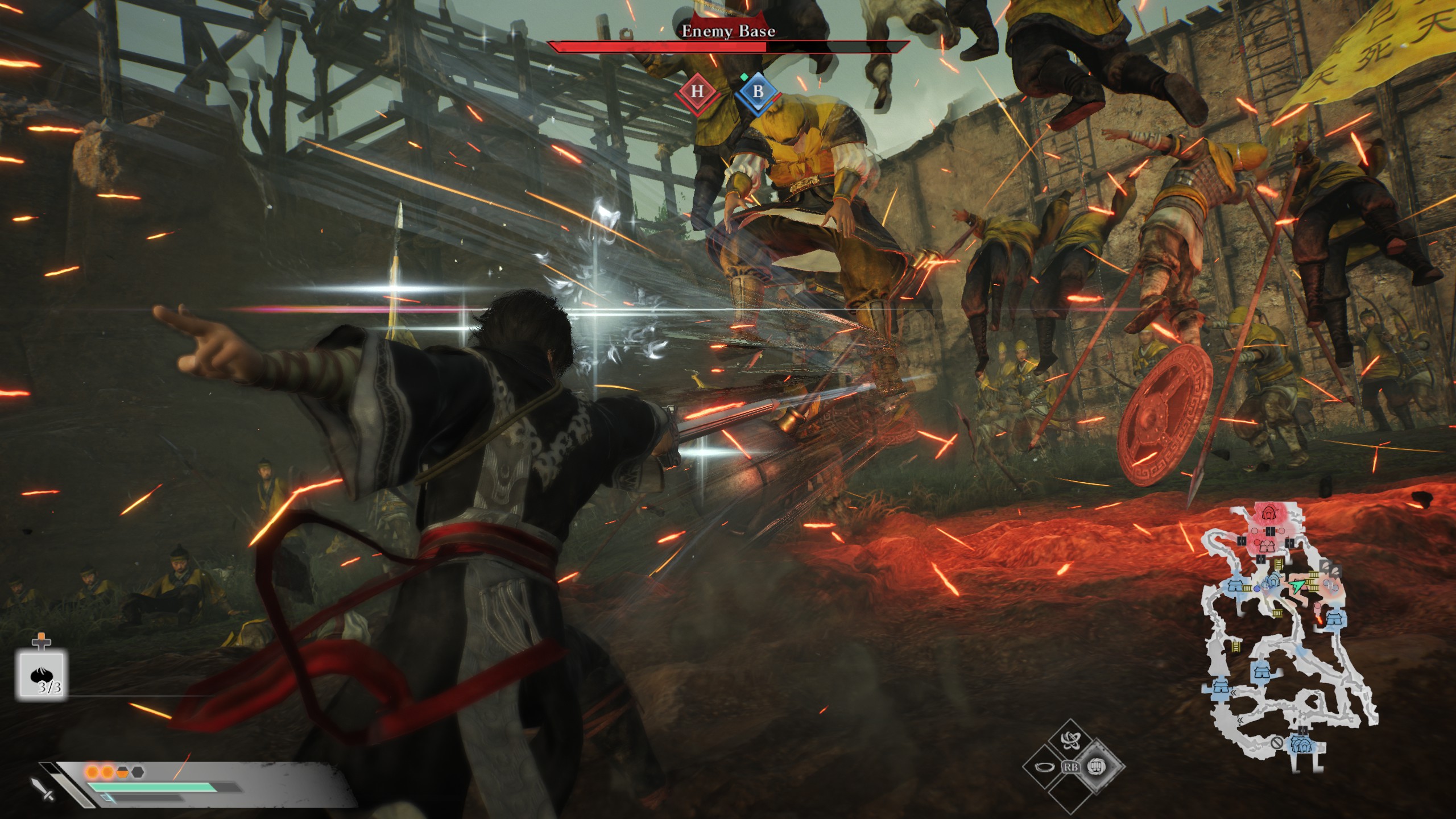
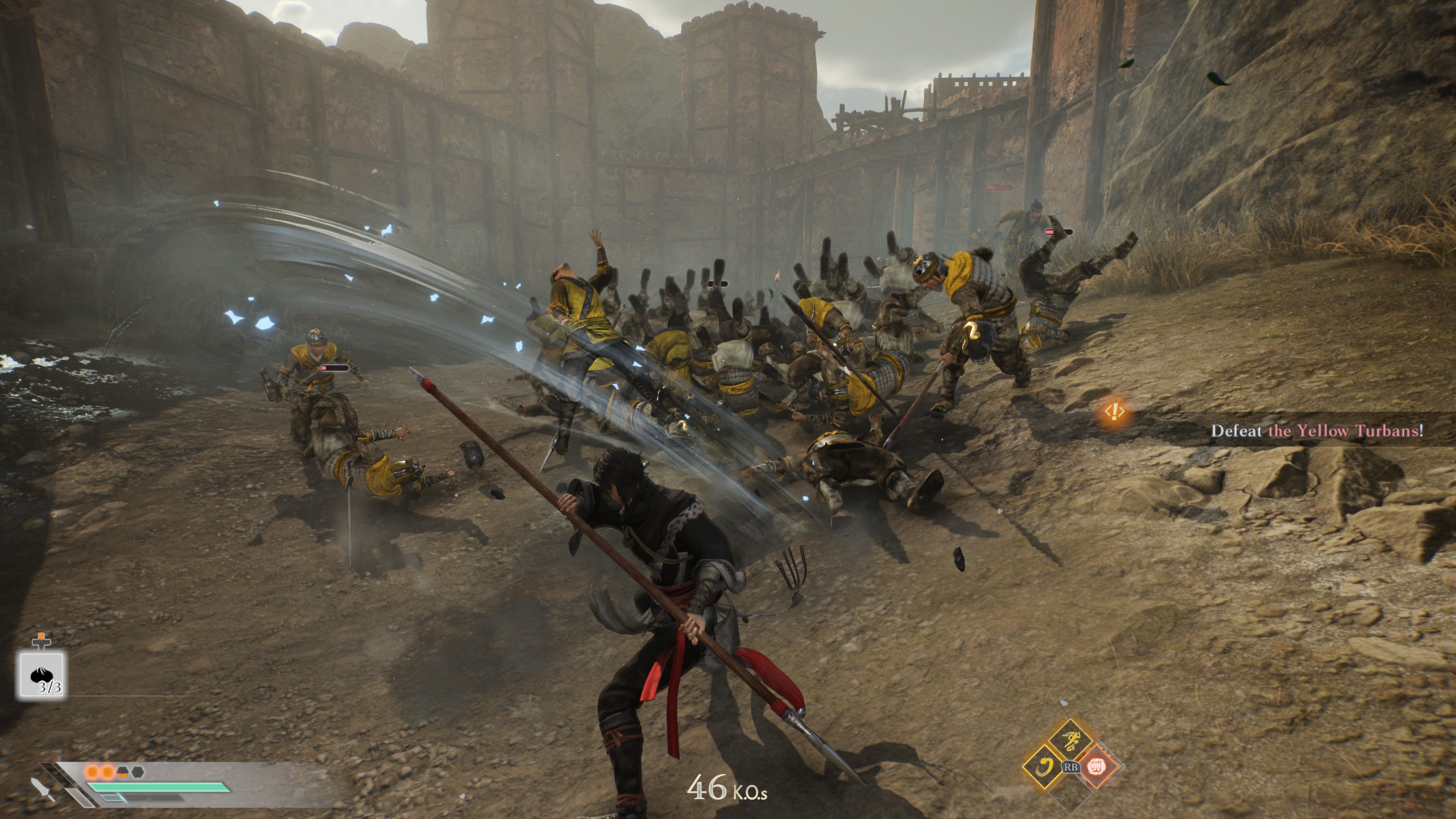
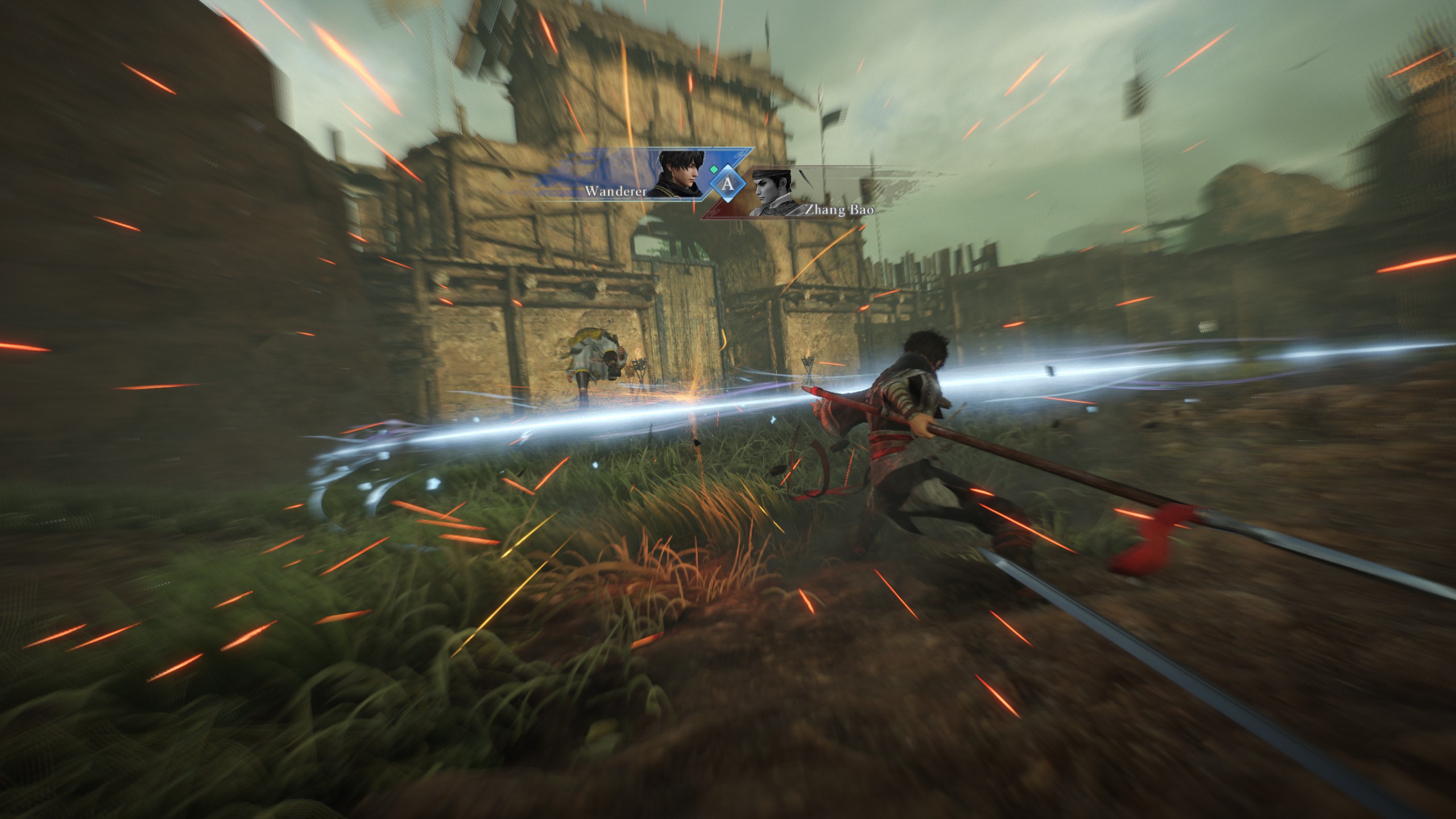
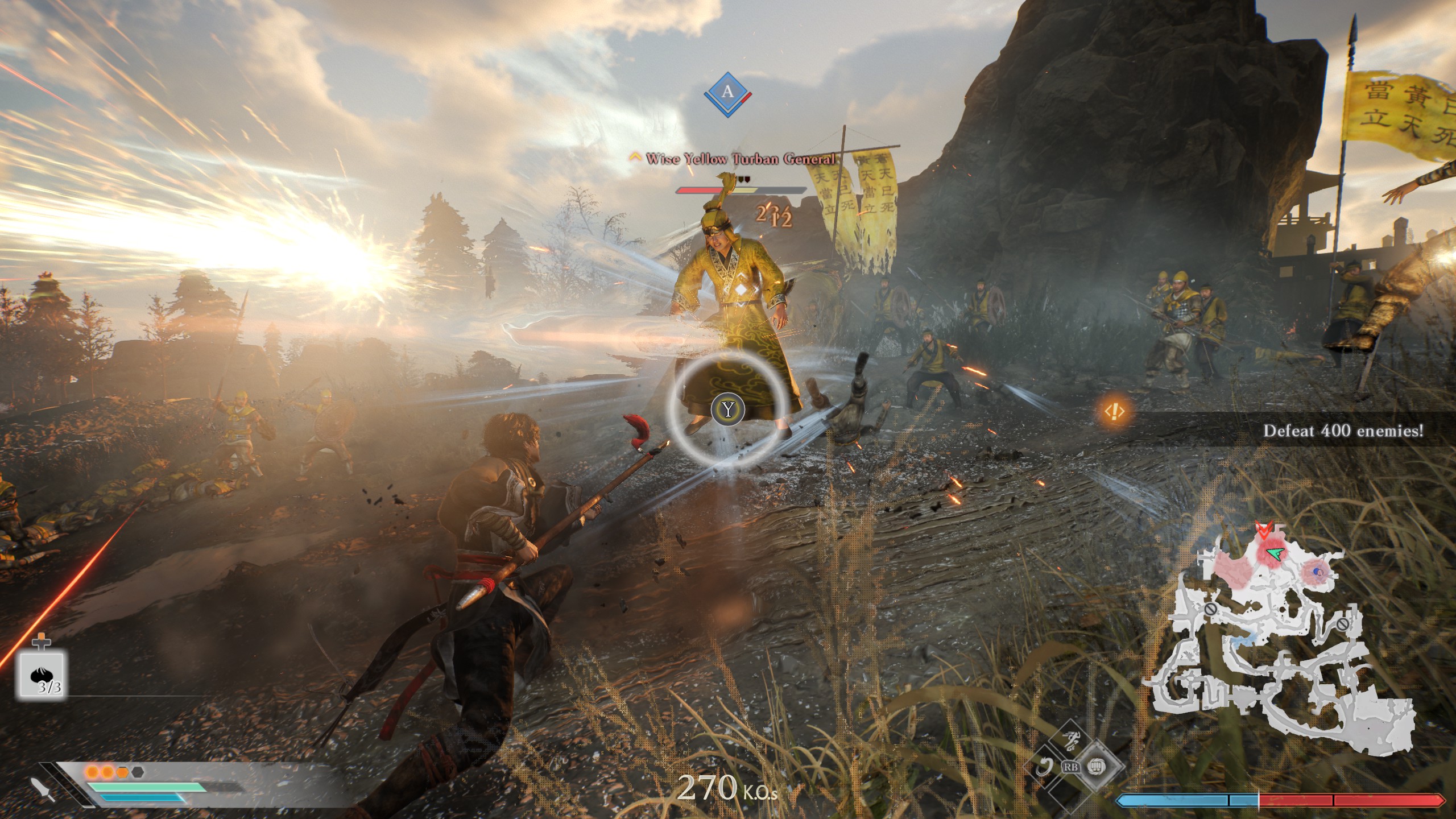
While the boring main character is a mark against Origins, it enables the three faction leaders to emerge as the real stars. Will you back the pragmatic but cruel Cao Cao? What about the good-hearted but unvarnished Liu Bei? Or maybe Sun Jian, who… well, I didn't ever really get his deal, but he sure has loads of kids. It's a compelling question to put to the player, and the game offers a detailed overview of the leaders' respective strengths and weaknesses before you make your choice.
There's a flat, low-budget presentation to the cutscenes, with many vital conversations taking place in the same two or three tents. That was a bummer, but didn't ruin the pull of the historical drama for me. Despite some bittersweet moments as you inevitably cross blades with characters you once considered friends, the choice of faction mostly feels like a different perspective on the same events rather than a daring rewrite of history (at least in the Shu route I took). But there are a handful of moments where you really can make a difference to who lives or dies.
Horde mode
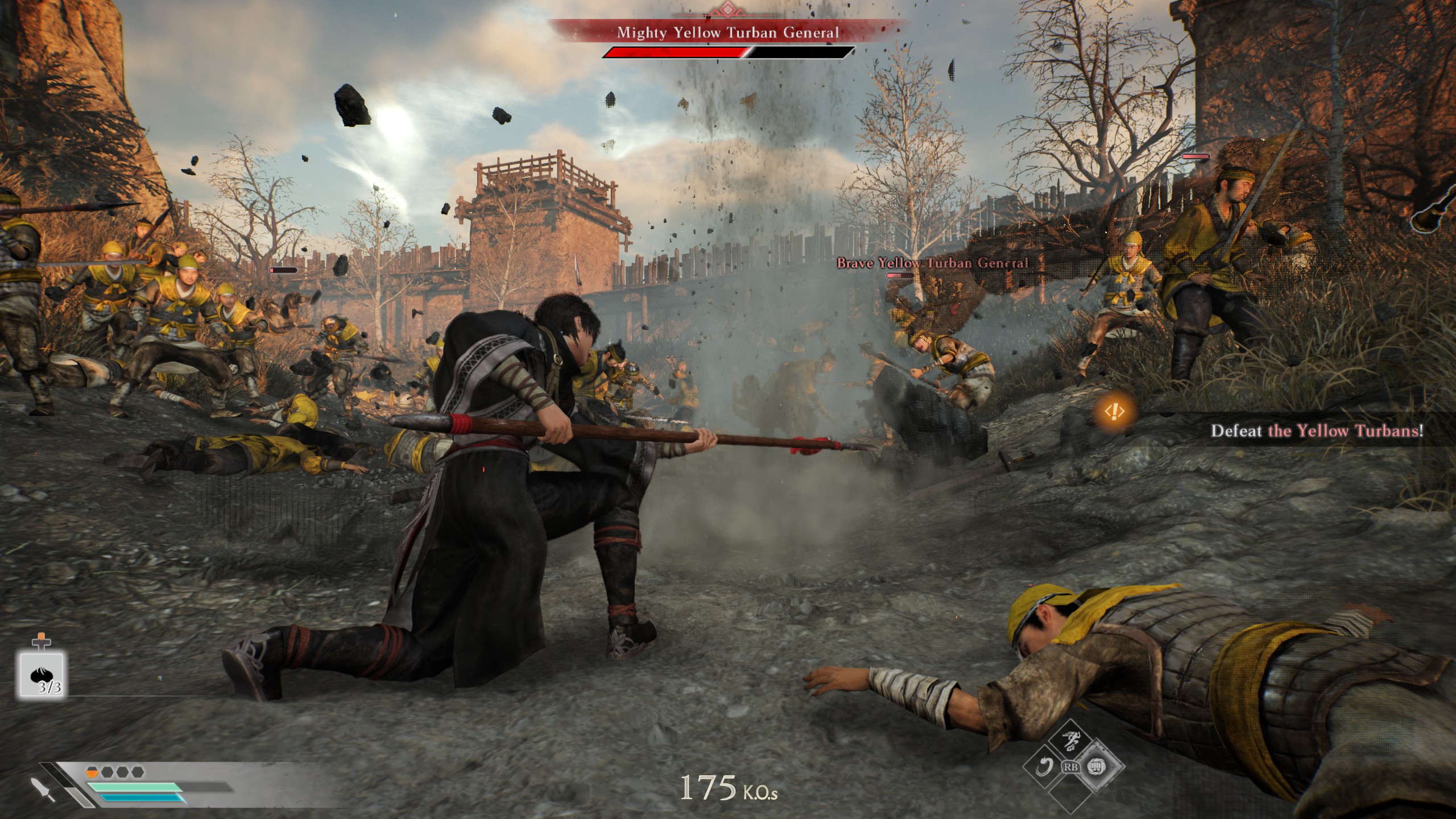
If you've played any of the Warriors games before—or indeed their Zelda or Persona-branded spin-offs—you'll know there's a fundamental repetitiveness to the whole thing. That's still the case here, but Koei Tecmo does plenty to enhance the core experience. The missions are pleasantly varied in terms of terrain, objectives and setpieces, with my victories feeling well-earned on the default Wayfarer difficulty without it drifting into being punishing.
Members of the Dynasty Warriors roster are reduced to only guest appearances on the battlefield, yet the combat remains varied thanks to a slowly growing armoury of melee weapons, each of which have their own unlockable 'Battle Arts' abilities, not to mention a slightly different rhythm of attack. I'm especially fond of the Gauntlets' Stone Strike Blast Battle Art, where the bedrock before my character is broken apart and tossed into mid-air, then smashed in an arc towards forward-facing enemies—and that's not even the silliest or most anime-ass one. Sometimes the right Battle Art changed my mind on a weapon I wasn't really feeling, and there are plenty to unlock over the course of the game. Experimentation is encouraged, since the Nameless Hero levels up each time his proficiency with any weapon increases.
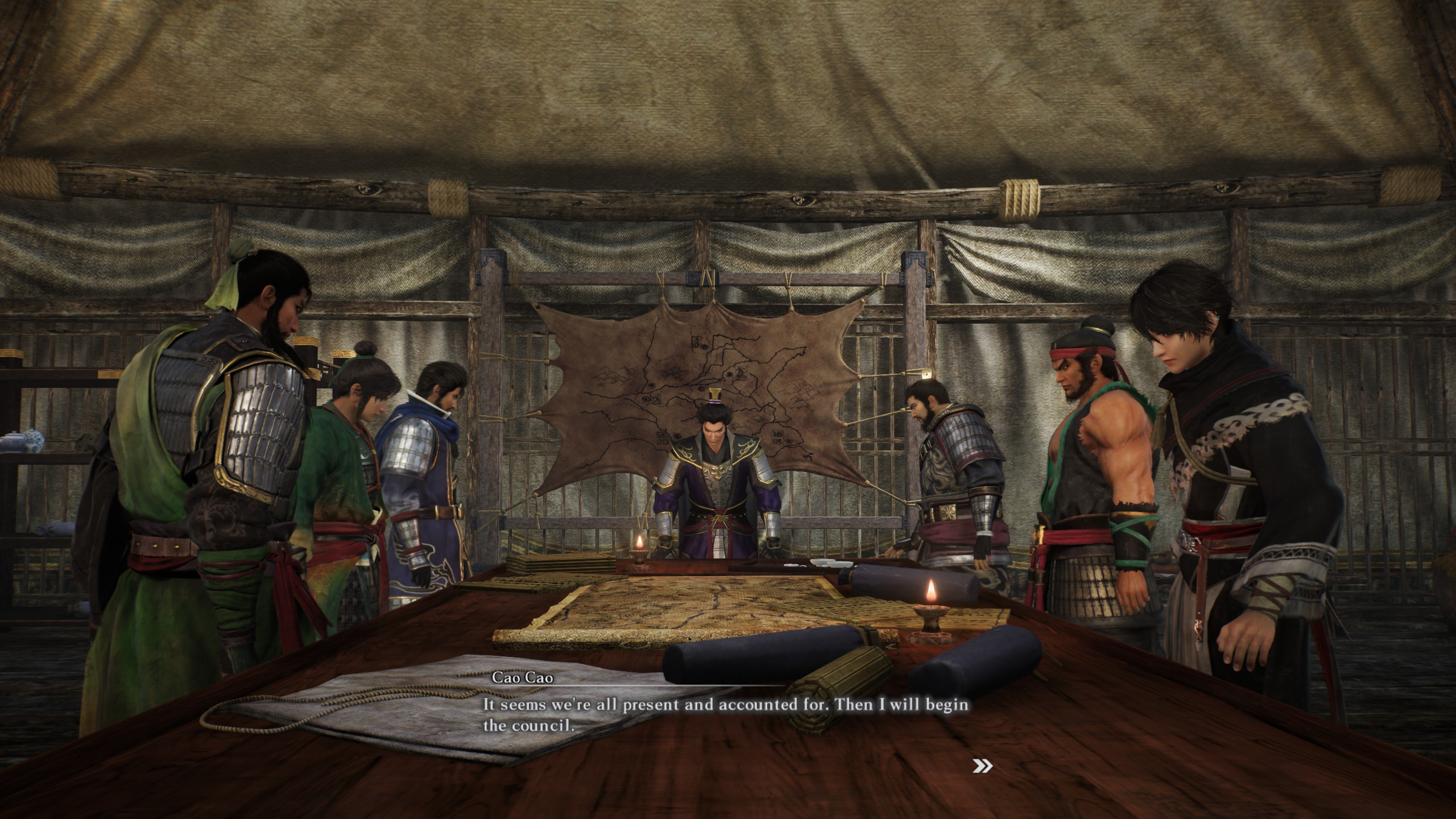
The parry is a smart concession to the post-Sekiro landscape of hack-and-slash games, offering satisfying counterattacks if you get the generous timing right. Dodging is similarly straightforward, and your reward for pulling off a slew of perfect dodges is being able to chain multiple Battle Arts abilities together. Origins is not trying to rival best-in-class Soulslikes in complexity, but the designers have achieved the right balance of stimulating one-on-one precision with the cathartic horde wipeouts that the series is known for. A bastard-hard but brilliant encounter with Lu Bu in the second half of the game (which took me about 30 attempts, and judicious consumption of the Meat Bun healing items) shows just how high that skill ceiling goes, yet it's still a simple-to-grasp combat system at its heart.
Then there's the addition of 'large forces' to Origins. These are visually spectacular hordes of hundreds of troops with their own giant collective health bar, which you drain by picking off officers from within their ranks, or by completing sub-objectives within a time limit (destroying a certain number of enemy chariots or killing a few hundred troops inside a few minutes, for example). Even though dismantling them is fairly similar each time, it's always exciting to see an army of this scale appear over the horizon—I get to face down the Charge of the Rohirrim singlehandedly and dust off my pauldrons once they've all eaten dirt.
Tactics—RTS-lite AI commands—help you deal with crowd control as you order your own growing force of underlings to fire flaming arrows into a morass of enemies, or defend your flank with spears, among other abilities. It's extraordinarily pleasing to call in a mounted cavalry of 20+ guards to clear out an enemy base before wandering in afterwards to clear out the last officers standing myself.
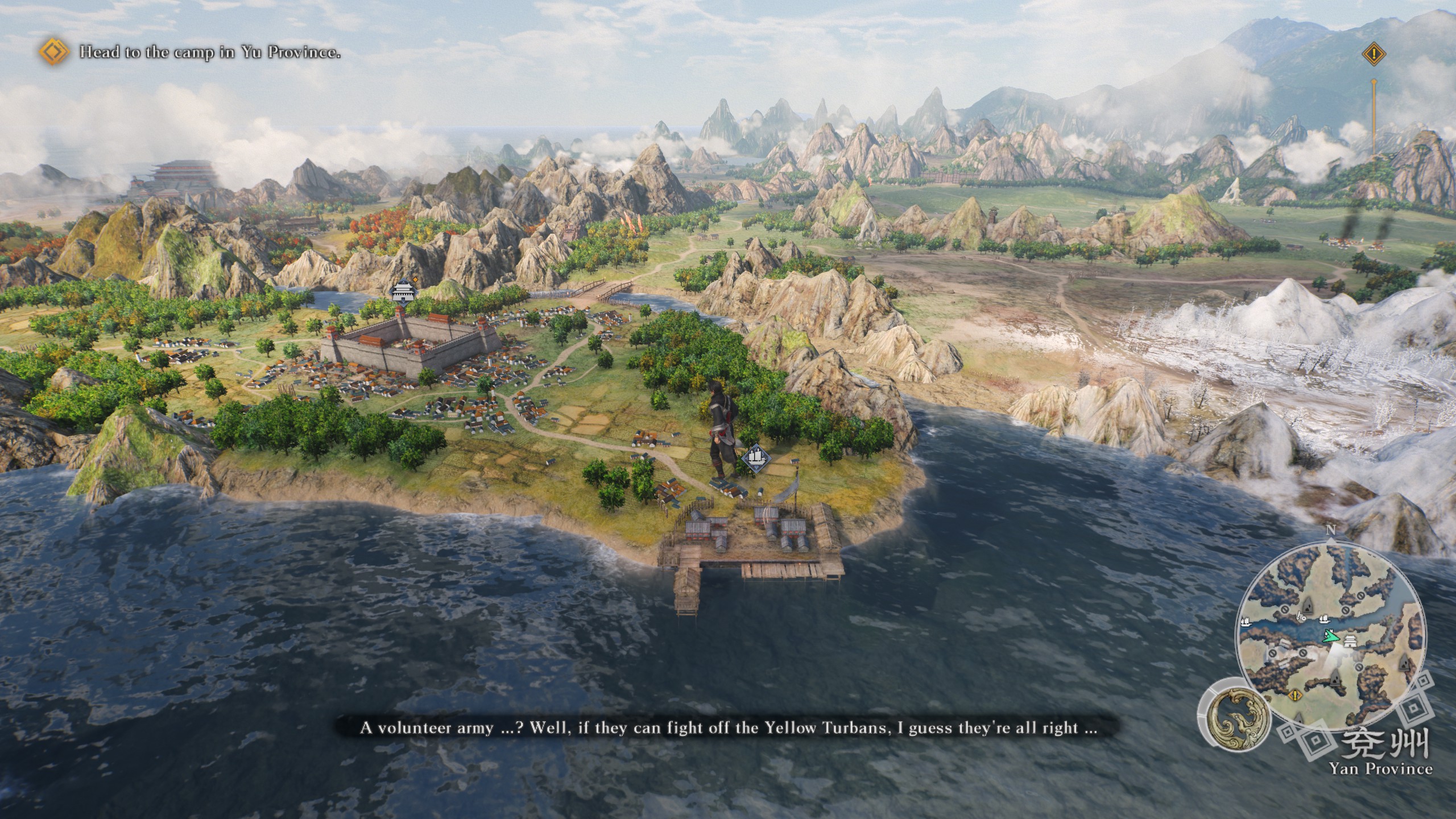
Outside the battlefield Dynasty Warriors: Origins is a lot rougher. The game is broken up by an overworld map rife with tedious busywork. Whether it's interacting with different faction lieutenants in dull cutscenes, buying new weapons from shops, finding arbitrary resources or completing very short battles for a progression boost, much of it is from the 'this could've been an email' school of side content. All of this does have a function in the game's delicately constructed progression curve, but it slows down an already lengthy-feeling 30+ hour campaign. It often feels like moving through treacle just to get to the game's next big clash.
And yet, despite those pacing issues, as well as the occasional oversight like horrible low-res text on PC, the quality of the battles makes Dynasty Warriors: Origins a successful revamp. If you've ever felt burnt out by the series doing the same ol' same ol', this is a worthy attempt to bring it bang up to date. Meet it halfway on some of its limitations, and you'll see a compelling vision emerge for the series' future.
A welcome refresh of a hack-and-slash mainstay that mostly impresses, despite a few glaring pacing problems.
